One of the aircrafts recently released in WW1 Wings of Glory, the RAF R.E.8, was conceived to replace the B.E.2 reconnaissance aircraft and light bomber. Being the Royal Aircraft Factory, with a prime focus on streamlining manufacture, the planes used many of the same parts.
We must remember that, for airplanes designed to do observation work, being very steady and easy to fly were assets, while avoiding enemy planes was not a consideration when the B.E.2 was designed. The problem was that the B.E. was so steady, it was very sluggish to make any kind of quick turn, such as might be useful for combat. Add in that they were very underpowered, with a slow rate of climb, and we could say the critique that the RFC was flying "Fokker Fodder" was largely aimed at the BE2.
The R.E.8 (Reconnaissance Experimental #8) provided only slightly more nimble maneuvers, but these came at a high cost: the plane gained an early reputation for slipping into a spin easily, and for sudden stalls, which it never entirely lost.
It certainly was an improvement over the B.E., however. For one thing, the observer sat behind the pilot, in a proper defensive position, and engine power was sufficient that the pilots did not have to leave the observer behind, if they wanted to carry a light load of bombs (another B.E. standard). A number of modern attachments were included to reduce pilot fatigue and low-grade flight controls were included for the observer, so that he could at least land the plane in case the pilot was out of action - this is reflected with a special card on all three models featured in the Wings of Glory Airplane Packs.
Once pilots adjusted, they put the plane to work with something like affection. Quirky looking and ungainly, someone recalled there was an English dance hall “comedienne” with similar appearance who spoke with a heavy Cockney accent. Thus, the sound of his name - Harry Tate - was very close to "Arr--ee--tayte," and the R.E.8 had a nickname forever.
Though superior to the B.E., the R.E.8 was still chronically underpowered. A host of improvements were attempted, though in most cases the better engines always went to better planes, leaving the R.E.8 always somewhat second-class in performance. Under the best terms, top speed scarcely topped 103mph/165kph) and was generally not that high. It was powered by a RAF 4a, 12-cylinder, air-cooled, inline V, 150 hp and armed with 2 or 3 machine guns, with 260 lb (112.8 kg) of bombs.
Despite its limited performance, the R.E.8 was a mainstay for RFC observation units, where it also did light bombing duties, from spring 1917 through the end of the war. The R.E.8 entered in service in Autumn 1916. Over 4000 were produced, and served with some 21 Squadrons, and as well as the Western Front. R.E.8s operated in Italy and Palestine, and, finally, in Egypt until November 1920. Having it in Wings of Glory gives you a centerpiece for what the air war was really about. While the fighter aces get most of the attention, it is really the observation and wireless artillery direction that were the most important role for both sides in the war. Will the photos make it home? Will the guns be ranged on target? These are what most of the fighting concerned.
RAF R.E.8 in Wings of Glory
In Wings of Glory, the RAF R.E.8 is featured in three different versions, introducing models used by the 30 Squadron, 52 Squadron (flown by Marsh/MacKay Dempster) and 59 Squadron. All of them includes the "Emergency Controls" card, that provides the option to let the Observer fly the plane (in a very limited way), if the pilot is disabled, each model includes other special abilities.
30 squadron was formed officially in Egypt in 1915 and served the rest of the war in the Middle East (and remaining there for decades after). As might be expected in a distant theater, the unit was equipped with a motley collection of cast-off airplanes, and felt receiving B.E.2s to be a real upgrade! The unit also received personnel from assorted sources, including the first Australian pilots, a "half flight" which had been assisting an Indian army. 30 Squadron served in Egypt and Mesopotamia in a variety of roles, from observation and oil pipeline security to even air dropping supplies to the besieged troops at Kut - that has the sound of an interesting scenario.
One of the aircraft of this squadron had a 1.57 inches Davis cannon, fixed at 45° on the right side of the fuselage, next to the place of the observer, so he was able to shoot forwards and downwards. It was used for ground attack. The Davis cannon was the first cannon model without recoil used in service, and this Airplane Pack includes a special card for it. Of more normal two-seater roles, this plane also offers both the Precision Bombardier and the Photo Expert abilities.
52nd Squadron was the first unit equipped with the R.E.8, in November 1916, and suffered the early problems of fatal stalls and spins to such a loss in morale that they exchanged the R.E.8s with another squadron to return to B.E.2s in January 1917! It re-equipped with R.E.8 in May of that year and served on through the rest of the war, suffering particularly heavy losses opposing the German 1918 offensives, including the featured crew, George Richard Thomas Marsh and Ian Mackay Dempster, which flown the R.E.8 B2293. They were forced down Feb 24, 1918, by Friedrich Altmeir of Jasta 24. Altmeir's Albatros suffered engine damage and he was forced to land right after the R.E.8 did. Dempster, who was Australian, died of his wounds the day after, and March was captured. He survived the war and lived until 1979.
Sometimes, in this squadron’s aircraft, the observer had paired machine guns instead of one – that’s why our model includes a card for it. This model also gives the option for having either the pilot or observer (or both) be "rookies" who perform shooting less well than average.
59th Squadron was formed in August of 1916, as part of "Boom" Trenchard's massive increase in the RFC. They were sent to France in February 1917 with a mix of veterans and rookies. It lost heavily during “Bloody April”, but served through the Armistice, flying almost entirely recon and artillery observation. The unit had a unique reputation for its excellent photographs.
The airplane featured in this pack was built by Daimler Co.Ltd. and was assigned to 59 Squadron on March 20th, 1918. The two red bars are the insignia of the 59 Squadron, which was soon abolished. On August 11th, 1918, this aircraft ceased its service at the 59 Squadron and took back in flight in England. The model includes some Crew Skill cards, as Precision Bombardier and Bullet Checker (which can ignore "green" jam symbols), as well as Technical Eye, which allows you to assess damage on both friendly and enemy aircraft if they are nearby.
Information sources: "The R.E.8: Historic Military Aircraft: No. 8", Bruce, J.M. (1954, Flight), "Reconnaissance & Bomber Aircraft of the 1914-1918 War", W. M. Lamberton (Aero Publishers; 1962), "Men and Machines of the Australian Flying Corps 1914-1919", Schaedel, Charles (Kookaburra Technical Publications, 1972), Royal Aircraft Factory R.E.8." Combat Aircraft of the World from 1909 to the present", Taylor, John W.R. (G.P. Putnam's Sons, 1969), Royal Air Force, Royal Air Force Museum, The Aerodrome, 59 Squadron RAF.

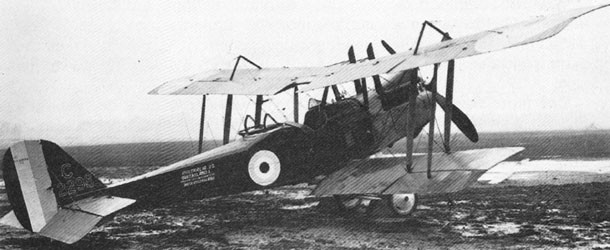
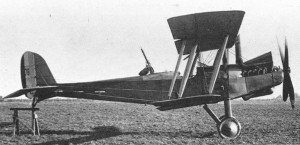
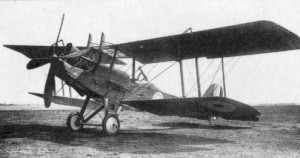
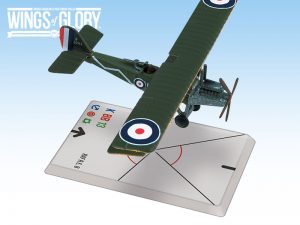

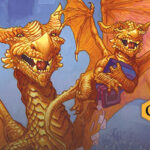
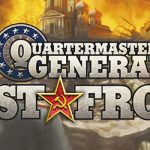





Follow Us on